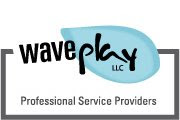Are you making the most of social networking to accomplish business goals, secure exciting positions and create new opportunities for yourself and your company? Many of your peers actively participate in social networking to build their personal brand.
You are likely a member of one or several social networks such as LinkedIn (
http://www.linkedin.com/) and Facebook (
http://www.facebook.com/). But are you receiving full value from these networks? As an executive, you likely find yourself increasingly involved in the marketing of yourself and your company to customers, vendors, board members, the investment community and others. Why not use the power of social networking to raise visibility, project a vibrant image, become aware of new opportunities and interact with the marketplace? To do so, consider the following 10 tips featuring the basics of social networking and enjoy the competitive advantages of a vibrant network.
Tip #1: Join Several Networks. What works for one person may or may not work for another. Many executives view LinkedIn as the gateway to professional social networks. Others move on to industry-specific networks or those focused on specific executive positions such as CFOZone (
http://www.cfozone.com/) for CFOs. Increasingly, social networks such as Facebook and Twitter (
http://www.twitter.com/) are used to enhance relationships among professionals. Be open to joining various networks--and stick with those that provide the most satisfaction.
Tip #2: Get a Great Headshot. There are practical reasons to invest in a great photo. Prior to a meeting, many executives do a quick search to evaluate a company and its management team--and displaying a great headshot is akin to dressing properly for the meeting. Work with your company's marketing department or public relations agency to secure the right photographer.
Tip #3: Create a Compelling Message. Social networks provide a stage for sharing your qualifications, interests and background. Tailor your message to fit in with the mission of a specific social network. Ask your firm's marketing department or public relations agency to create an effective profile to feature you and your firm. Add your company's website, your professional blogs, and other relevant information to your profile.
Tip #4: Make Invitations a Habit. Develop a process for populating your social networks with professionals and friends. If you are overwhelmed at the idea of sending invitations to your network, take advantage of the many networking sites that allow you to download and select your contacts from existing databases, such as Microsoft Outlook or Gmail (
http://www.google.com/). When you meet someone worthy, invite them to join your network.
Tip #5: Join Special Interest Groups. Many social networking sites offer the opportunity to join special interest groups, such as the Financial Executives International (FEI) Group on LinkedIn or Facebook. Many networks offer access to college and employer alumni groups. Your participation will open doors to new resources, news, opportunities and participants around the globe.
Tip #6: Update Your Profile Regularly. Your public profile on a social network is like a brand--you must nurture it to keep it fresh. Visit your profile on a regular basis and enhance it with updates and additional information. Promote your public profile when interacting with colleagues--mention your participation at meetings or when sending an email.
Tip #7: Share Knowledge. Social networks provide the opportunity to help others while showcasing your knowledge and demonstrating leadership in your areas of expertise. Answer questions, send helpful comments and inform your network of breaking developments. If you have a blog, include a link.
Tip #8: Use Your Network as a Resource. Networks provide a fast, easy way to reach out quickly for help. For instance, if you need a speaker for an upcoming event or a vendor for a specific technology fix, turn to your social networks for help. You will save time and get ideas at the grassroots level.
Tip #9: Stay Alert to Opportunities. Just as you would ask your network for help in identifying reliable resources for your needs, stay on the alert for requests from others. Requests to a network often result in multiple responses--if you are not paying attention, you may lose an opportunity.
Tip #10: Engage! Stay in touch with your social networks on a regular basis. One of the most appealing aspects of joining a social network is becoming a member of a community. Many executives dedicate 10 to 20 minutes at the top of each day to check in with their networks.
Did you know that search engines place more weight on social networking interaction than touches on a typical business website? This means that active social networkers often show up higher on a search engine list than individuals who do not participate in social networks.
So make the most of social networking--it's good for you and good for your company.
.jpg)
